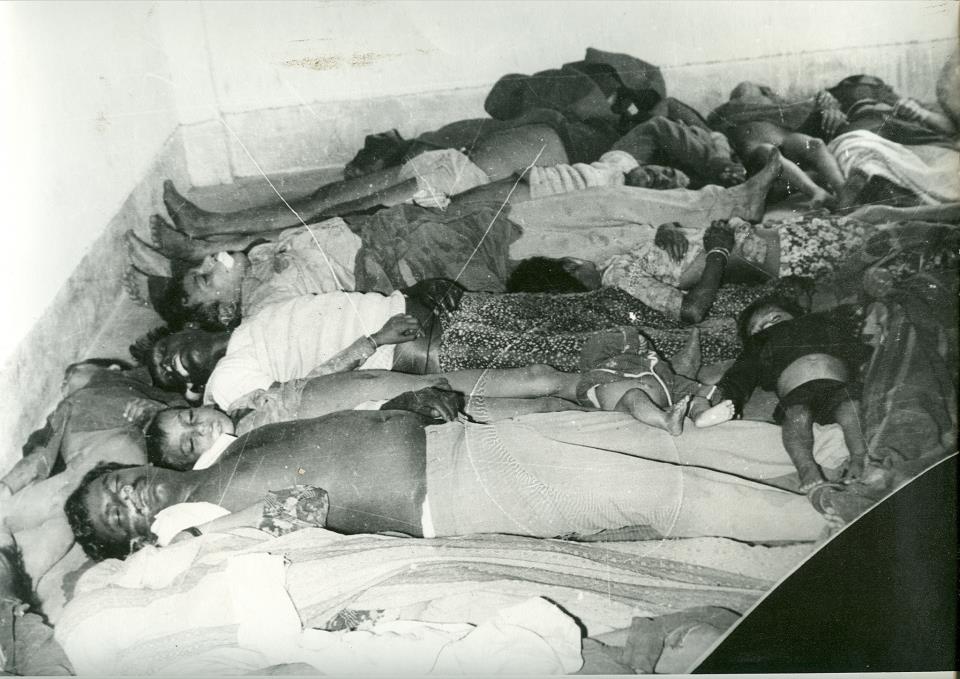UNDER THE VOLCANO by Indra Sinha
Indra Sinha, author of “Animal’s People” tells the story of local journalist, Raj Keswani, who has the dubious honour of being the man that loudly predicted the Bhopal Gas Disaster and found himself not being listened to.
The third part of the story describes the awful aftermath in the morning after the gas leak…
III. AFTERMATH
LIGHT CAME TO CITY STREETS full of corpses sprawled in the agonised poses in which death had found them. They lay in heaps, limbs twisted, faces contorted. In some places the dead were so many that it was impossible to walk without stepping on them. These were scenes from an apocalypse. The sun came up on choking, blinded people making their way to the hospitals. Some, desperate to relieve the agony in their eyes, were washing them in sewage water from the open drains.
The hospitals were full of the dying and doctors did not know how to treat them because they did not know which gas or gases had leaked, and Union Carbide would not release the information, claiming it was a ‘trade secret’. A quarter of a century later, Union Carbide and its owner Dow Chemical continue to refuse to share the results of at least seventeen studies into the effects of MIC. They deny the existence of these studies, but at least one has recently come to light because a researcher involved leaked it to the media. With or without these studies, twenty five years of suffering prove that mass exposure to MIC destroys bodies, minds, families and a whole society.
Abdul Mansuri speaks for thousands. ‘My breathing problems started after the gas and got worse and worse. I can truthfully say that I have never had a day’s health, or a day without pain, since “that night.”’ For some the pain, physical, mental, emotional, has been too much. Kailash Pawar was a young man. ‘My body is the support of my life,’ he said. ‘When my breathing is normal I feel like living. But when it becomes heavy, thinking stops and absolute pain takes over. I have become worthless.’
He was still in his twenties when he doused himself in kerosene and struck a match.
Today in Bhopal, more than 100,000 people remain chronically ill. The compensation paid by Union Carbide, meant to last the rest of their lives, averaged some £300 per head, which taken over twenty five years works out at around 7p a day, enough perhaps for a cup of tea. Over the years the survivors have received little medical help. Being mostly very poor, they were often treated rudely. Government doctors would refuse to touch them. They were theoretically entitled to free treatment but were prescribed expensive drugs they did not need and which in some cases actually harmed them. In 1994 the Indian government, eager to put the gas leak behind it, shut down all research studies into the effects of the gas, just as new epidemics of cancers, diabetes, eye defects and crippling menstrual disorders were beginning to appear.
Abandoned by all who had a duty of care, the survivors decided to open their own clinic. In 1994, an appeal appeared in the Guardian, launching the Bhopal Medical Appeal. The generous response of the newspaper’s readers enabled the survivors to buy a building, hire medical staff and begin training. In 1996 the Sambhavna Clinic opened its doors, offering survivors a unique combination modern medicine, traditional ayurvedic herbal treatments, yoga and massage. Consultations, treatments, therapies, medicines and post-treatment monitoring are all absolutely free.
You can read the complete Bhopal Marathon publication online here



